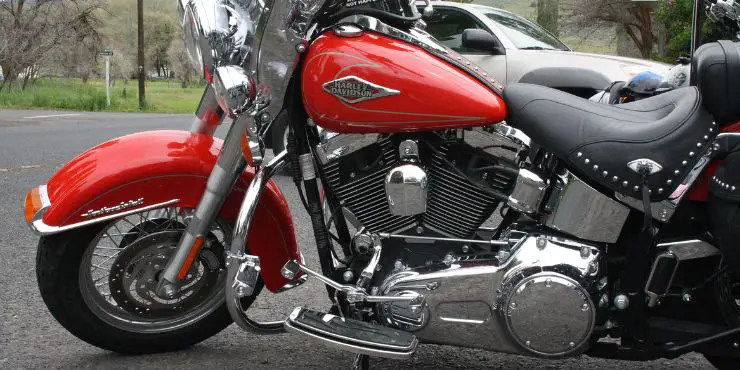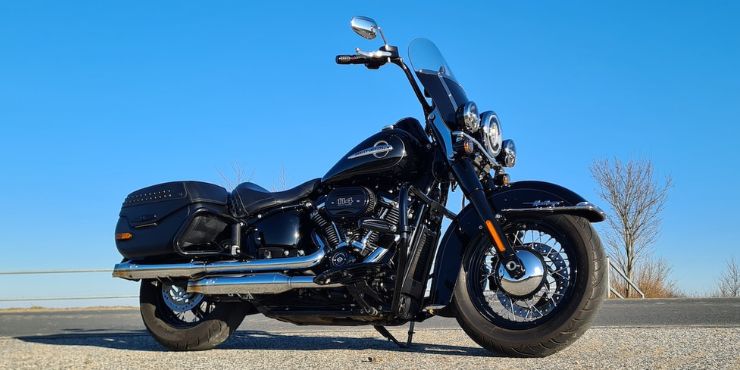Are you a Harley-Davidson biker looking to install a heel toe shifter on your Harley-Davidson bike, but don’t know how to? If so, then this blog is just where you need to be.
To install a heel/toe shifter on a Harley-Davidson, remove the existing shift lever, slide the heel/toe shifter onto the shift shaft, align it correctly, and tighten the securing bolts. Test the movement of both levers to ensure smooth shifting.
In this guide, you will get to know all about heel toe shifters, what is a heel toe shifter, what is the purpose of a heel toe shifter, how does a heel toe shifter work, how to install heel/toe shifter Harley-Davidson, and how to remove a heel toe shifter among others. Continue reading to get all the answers that you are looking for.
What is a heel/toe shifter on a Harley-Davidson bike?
Harley-Davidson heel toe shifters have been in use for decades. It is a lesser-known fact that Harley-Davidson started manufacturing bikes with heel toe shifters in the early 1950s. Since then, this design has become quite popular among touring and cruiser motorcycle owners.
Through the years, more and more aftermarket manufacturers have started offering heel toe shifters, and with good reason. Although many bikers prefer shifters, most stock cruisers and touring bikes still don’t feature this essential component.
A heel toe shifter on a Harley-Davidson bike is a second-shift lever mounted behind the regular toe shift lever. There are two main designs when it comes to heel toe shifters. In most cases, there are two shift levers mounted on the gear shift shaft. The toe shift lever will face forward, whereas the heel shifter will be backward.
Why are heel/toe shifters used?
The primary idea behind heel toe shifters is that they will allow you to easily shift gears by using your heel. This has many advantages, as shifting like this will be much more convenient. Moreover, it will result in less fatigue on longer rides. Besides, the toe shifter will not scuff your boot.
When comparing touring and cruiser bikes to other types of bikes, one of the primary differences will be that these motorcycles offer a different riding position. Moreover, they also feature floorboards instead of footpegs. When it comes to shifting via a regular toe shifter, you will need to move your left foot under the toe shifter’s peg.
While that is easy on street and dirt bikes, it will be slightly trickier on cruisers and touring bikes. This is the case because the floorboard is mounted under the shifter, which often leaves limited space for your feet. Another issue will be the riding position, as on cruiser bikes, your feet will be in a different position than on a sport bike.
This is where the heel shifter will come into play. Thanks to heel/toe shifters, you won’t need to place your feet under the toe shift peg. Instead, you will be able to shift up with the heel shifter conveniently.
How do heel/toe shifters work
A heel/toe shifter on a Harley-Davidson bike works in a surprisingly simple way. The heel shift lever and the toe shift lever generally face in opposite directions, and they act similar to a seesaw. This essentially means that pressing the heel shifter down would move the toe shifter up. If you’re looking to shift into an upper gear, you can just press down on the heel shift lever using your heel. It will turn the shift shaft in the same direction as if you are moving the toe shifter level up.

It is as simple as that. It is convenient as you will be able to control the transmission by pressing the two levers down, without placing your feet under the toe shifter.
How to install heel/toe shifter, Harley-Davidson
You can easily install a heel toe shifter on your Harley-Davidson bike by bolting it onto the gear shaft. The method of installation will depend on the design of the shifter that you have purchased. If it is a complete heel toe shifter kit, you’ll need to remove the correct toe shift lever and then replace it with the new levers. However, if you have purchased a separate heel shift lever, it needs to be mounted onto the end of the gear shaft while also moving the current toe shift lever towards the shaft’s engine.
Complete heel toe shifter kits usually come with two different designs. Some of the kits feature two separate shift levers – one heel and one toe shift lever. Meanwhile, other shifters come as one unit, which refers to a big V-shaped lever with two pegs on its ends. Both designs will require you to remove the current toe shift lever and bolt the new levers to the shaft.
Other heel shifters get sold as a single unit, which means that they need to be attached next to the factory toe shift lever. In the majority of cases, the heel shift lever needs to be mounted onto the end of the shaft.
Each aftermarket heel toe shifter will come with an installation manual. Make sure that you’re reading it carefully, while also remembering to follow the manufacturer’s recommendations. Moreover, you shouldn’t forget to tighten the screws properly.
Keep in mind that not every aftermarket shifter is compatible with factory floorboards. You should ensure that the shifter you intend to buy fits on your motorcycle before you order it. Besides aftermarket kits, many manufacturers also offer OEM heel toe shifters, so it’ll be wise to do your research to find the best possible solution available. You will be able to find stock Harley-Davidson heel toe shifters for virtually all models on the market easily.
How to remove a heel/toe shifter from your Harley-Davidson bike
It is actually pretty simple to remove the heel toe shifter from your Harley-Davidson motorcycle. All that you typically require is the appropriate size Allen key. Some owners choose to remove only the peg from the heel shift lever while leaving the arm in place. The idea behind this solution will be that it leaves the floorboard empty while you can still use the shift arm for shifting.
While it isn’t a common practice but in certain cases, it could work. Another trick for saving some space on the floorboard would be to replace the pegs on the shift levers with smaller ones.
For removing a heel toe shifter from your Harley-Davidson bike, you will need to loosen the bolts on both the heel and the toe shift levers. After that, slide off both levers from the shaft before putting the toe shift lever back to the end of the shaft. In other words, you will need to bring the toe shifter to an outside position and then remove the heel shifter. For more safety, it is recommended that you should install a heel sift eliminator, which will help keep the toe lever in position on the shaft.
FAQs
How to use a heel/toe shifter?
For shifting up, you’ll need to press down the heel shifter or move your foot under the toe shifter and lift it up. Meanwhile, for downshifting, you’ll need to press down the toe shifter.
Are there any benefits to heel/toe shifting?
The fancy footwork of heel toe shifting certainly offers many benefits. It’ll reduce stress on the transmission, allow for smoother and more efficient acceleration around the corners, and keep the weight of the bike balanced during gear changes.
Should you double clutch or heel/toe?
When you are slowing down and going from the higher gear to a lower gear, double clutching will help get the next gear up to speed. Meanwhile, the heel toe throttle blip will get the engine up to speed with the transmission.

